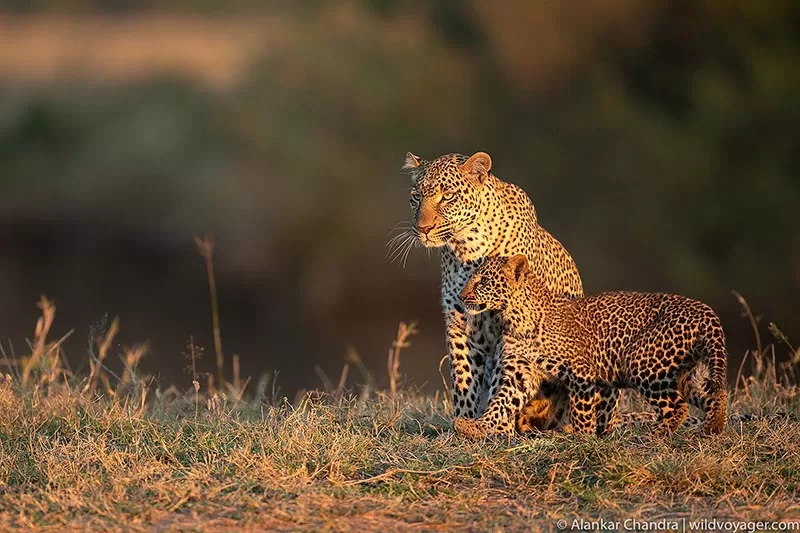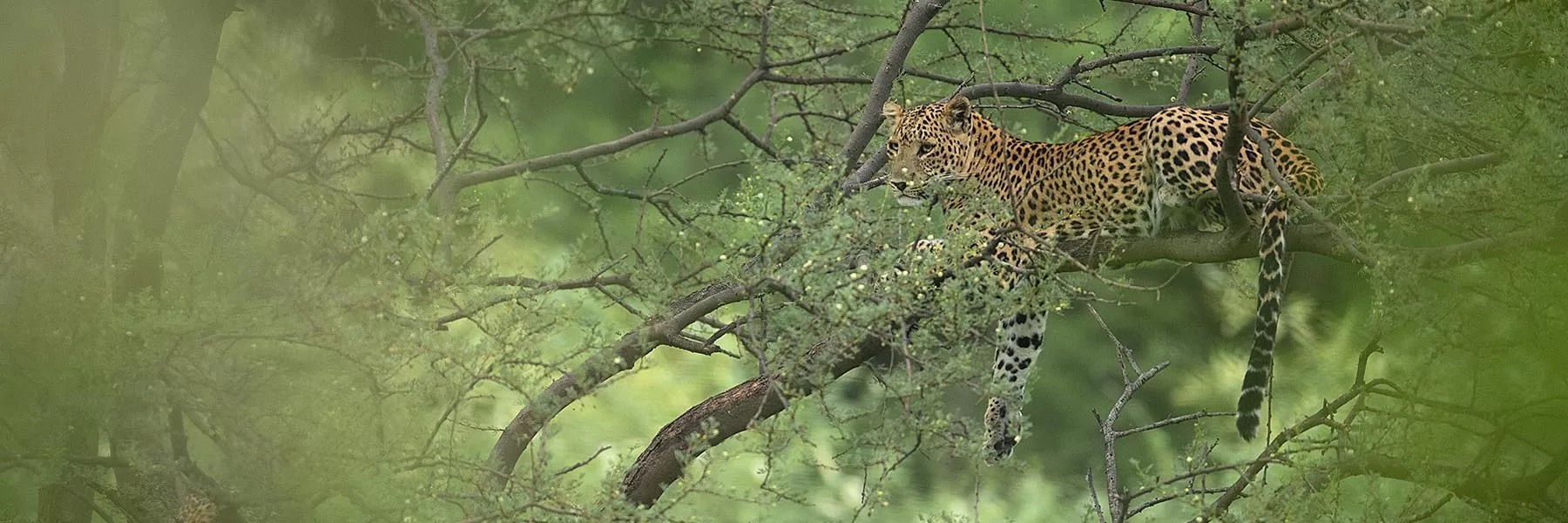Leopards belong to the big cat family and are known to be ferocious yet graceful hunters. They are closely related to lions, jaguars, and tigers These animals are regarded as some of the most beautiful members of the entire Panthera genus.
Most people believe that leopards are only found in Africa, but they are widespread all over the world. One can find them in Central Asia, India, and China as well.
The leopard is a very elusive, shy, and secretive animal who likes to live in solitude. Here are some amazing facts about leopards that will fascinate you:
1. Size and life expectancy
Although leopards are larger than house cats, they are the smallest members of the big cat family. They only grow 3 to 6.2 feet long while their tails add another 25 to 39 inches to their length.
The male and female leopards vary in weight. Adult males weigh 80 to 165 lbs, or 36 to 75 kg. On the other hand, a female leopard weighs 46 to 132 lbs, or 21 to 60 kg.

Leopard in Indian forest
Leopards may appear small, but they are extremely strong and agile for their size.
An average leopard living in the wild has a life expectancy of 12 to 17 years. Meanwhile, in captivity, they live up to 23 years.
2. Habits and lifestyle
Leopards are nocturnal animals who spend their nights hunting instead of sleeping. Because of their adapted retinas, leopards can see seven times better in darkness than humans.
As they are exceptional climbers, leopards also like to spend most of their daytime on trees. They like to rest under the shady branches of a tree or on sheltered rocks. To warn intruders, leopards usually leave scratches on trees and leave their claw marks.
As they also have a highly developed sense of smell, they leave their scent marks.
Their spotted coat makes them camouflage and blend in with the leaves. They also drag their prey on top of trees to keep it from being taken by another predator.
Leopards only spend their time with other fellow leopards when they are mating or raising a younger cub. The rest of the time, they like to hunt and roam alone. If leopards do encounter one another, they usually emit a rasping or sawing cough to inform the other leopard of its presence.
Home ranges of leopards often overlap with each other, and thus male leopards usually stumble upon multiple female territories.
3. Hunting skills
Leopards have a classic feline hunting style. They use two techniques to hunt their prey: ambushing and stalking. In both strategies, a leopard tries to get close to the target. The leopard seizes the right moment and charges towards its prey at a speed of 60 km/h. The animal then pounces on its prey and kills it with a bite to the neck.

Leopard hunting
Their astounding strength is seen when they carry or drag their meal, even if it’s heavier than themselves, onto the trees, which are several metres from the ground. The trees protect the meal, and the leopard can feed off the carcass for days undisturbed.
Leopards also hunt from trees as they blend in with the leaves until they attack a potential prey by pouncing on it.
4. Leopard spots
Most leopards are golden in color and have distinctive dark spots. The spots are referred to as rosettes because they resemble the shape of a rose.
Black leopards or black panthers, which are rarely seen in Africa appear to be solid in color. As a result, their spots are harder to distinguish.

Peeking leopard
5. Habitats
Leopards are adaptable and can reside in various places around the globe. They can live in almost any type of habitat, namely rainforests, shrublands, swampy areas and deserts, woodlands, savannah, grasslands, forests, mountains, and coastal shrubs.
Leopards are distributed in large areas stretching from sub-Saharan Africa to West Asia, South and Southeast Asia, the Middle East, and Siberia.
It is a fact that leopards can live in a greater variety of places than any other large cat.

Leopard on rocks
6. Leopards and their diet
Leopards are classified as carnivorous animals, but they aren’t picky eaters at all. These animals retain moisture from their food and, hence survive without water for a long time.
Their diet consists of a large number of animals, such as baboons, rodents, Thomson’s gazelles, and monkeys. They also prey on large birds, snakes, antelopes, warthogs, and porcupines.
Leopards are amazing swimmers and also feed on amphibians, fish, and crabs.
7. Mating habits and Offspring
Leopards have a polyandrous mating system where both males and females copulate with several mates. Although they breed throughout the year, a leopard’s peak period occurs in May during the rainy season.
Male and female leopards spend a brief amount of time together, after which they go on their separate ways. The female raises the cubs alone.
The gestation period lasts for 90 to 105 days and typically gives birth to a litter of two to three cubs. The mother leopard finds a well-hidden lair to give birth to the cubs. Babies are usually born in a den and remain hidden in a secluded place dense with vegetation because they are vulnerable.
After they are born, the cubs are blind and almost hairless, depending on their mother for food. They do not leave the den until they turn 3 months old. It marks the time when cubs are ready to accompany their mother on the hunt.
By the age of 6–8 weeks, cubs develop a dark woolly coat covered with blurry patches. This serves as a camouflage for the young leopard, which allows them to follow their mother around.

Leopard with cub
They remain with their mother for 3-18 months after which they leave and find their territories. Soon, they also start breeding at 2-3 years old.
8. Population threats
Today, leopards are suffering a decrease in their population. In various places, these animals are hunted for their skin and teeth as well as illegally traded.
Due to such factors, they are vulnerable and threatened.
Leopards are an interesting member of the cat family and also possess some unique habits. Which fact about leopards surprised or intrigued you the most?
Experience these magical beasts on one of our specially curated Leopard safaris around the world, particularly in Africa.
If you loved reading this story, then subscribe to our blog here (it will ask to verify your email) to get inspiring travel stories and trivia delivered to your email. Stories about wildlife trivia, cultural experiences, curated luxury hotel lists, underrated places to travel, polar journeys and much more.











